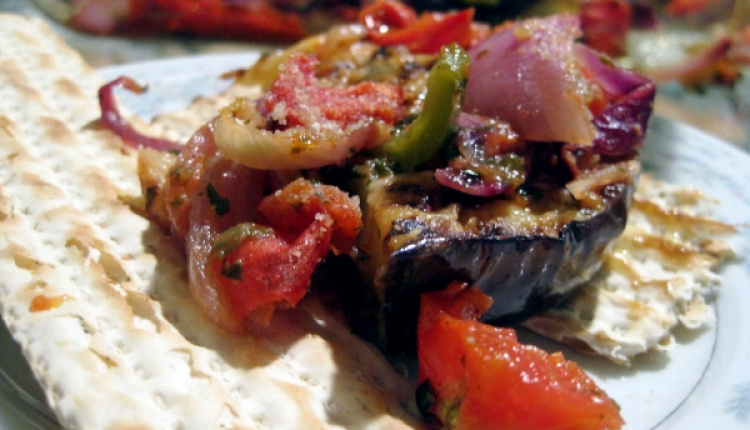Imam Bayildi
- by XpatAthens
- Saturday, 21 February 2015

In the past, when Greeks and Turks were not trading blows, insults, threats, or populations, they somehow found the time to swap recipes, as all longtime neighbours do… Now, there are those who claim that certain Greek foods are Turkish, and there is the counterclaim that many Turkish foods are actually Greek. But who really cares? The Greeks make a certain dish one way and the Turks in another. I have tried both the Greek and the Turkish versions of this recipe, and both versions were equally enjoyable.
The name of the dish “Imam Bayildi” is Turkish for “The Fainting Cleric” and as the legend has it, a certain "imam" (the Muslim term for a religious leader) had just completed a long fast and when this dish was set before him, he was so overcome with the mouth-watering aroma that he fainted. So, whatever the dish may have been called before, it was thereafter renamed in his honour.
Recipe:
6 smallish eggplants
1 lb. ( ½ kg.) onions, chopped
1 cup (250 ml.) of Greek olive oil
3 tomatoes, pulped and strained, or 1 cup (250 ml.) cup fresh tomato juice
3 garlic cloves, finely diced
1 tbsp. (15 ml.) finely chopped parsley
2 tbsp. (30 ml.) breadcrumbs
1 slight pinch of nutmeg
Salt and pepper
1. Wash eggplants well and remove stems and ends.
2. Using a sharp knife, make 4 deep lengthwise slits in each eggplant, make sure each slit runs almost up to but not through each end as we don’t want the eggplant separating into quadrants.
3. Sprinkle salt inside each incision in each eggplant then place the eggplants in a saltwater bath for one hour to drain away their bitterness; then remove and wash eggplants and leave to drain for 5 minutes.
4. Heat olive oil in a large frying pan and add the eggplants. Be sure to turn the eggplants a quarter turn or so every couple minutes to ensure even cooking and fry them until the skin becomes soft and they begin to wilt.
5. Remove the eggplants from the oil and set side by side in a baking dish, always with one incision facing straight upwards.
6. In the same oil the eggplants were fried in, add the chopped onion and sauté until golden then add the tomato pulp and bring to a boil then simmer for 10 minutes. Stir in the garlic, parsley, salt, pepper, nutmeg and simmer for another 5 minutes then remove pan from heat and allow mixture to cool slightly.
7. Preheat oven to 350° F. (180° C.).
8. Using a teaspoon carefully spread open and fill the topside incision on each eggplant with generous portions of the onion mixture, but be careful not to split the eggplants through as they will be very soft. Once the eggplants have been filled, if there is any leftover onion mixture simply place it in the pan among or between the eggplants and pour any remaining oil from the frying pan over everything.
9. Sprinkle some breadcrumbs overtop of each stuffed eggplant and then place pan in oven and bake for one hour.
Note: As with all oil-rich foods (‘lathera’ in Greek), this dish is best served cool to allow the flavours to coalesce so let cool to room temperature before serving. If you leave it out overnight, it will be even more flavourful on the morrow.
Kali Orexi!
To read more, please visit greekgourmand.blogspot.gr



